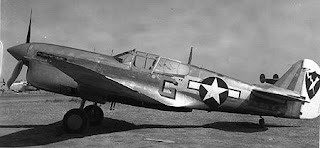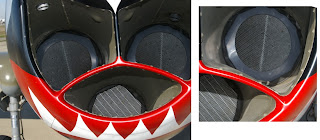|
A P-40 still flying to this day.
 |
from left: CuzCr0p, nobody1, shakey61, and s1id3r0.
Out of camera was higheye, and TA57. this one is from
quite a while ago, good times though. |
So we have been off track for a bit now, and by we, I mean me. I have been working on getting my ticket, so I have not been as attentive to the blog as I have intended to be. Been studying and working, I suppose I have slept as well, though I don't remember it. As of this week I am just getting back into the swing of things.
Since I have been away for a while, I would like to talk about something a bit more interesting, which means "air combat" -- at least to me, and most that I imagine will read this.
One of the biggest causes of a failed combat mission is getting attacked when you are not in the right position to defend. When I talk about being in the right position, I am also referring to the state of the aircraft that you are flying, altitude, fuel load-out, and ordinance -- as well as your mind set at the time. An easy way to think about this is to use the acronym SAFFE: Speed, Altitude, Fuel, Fire-Power, Egress.
Speed & Altitude:
Quite a few times on missions, we have taken off from a base close to some action, and have proceeded out at
Vx (
http://www.learntofly.ca/airspeeds-v-speeds-vx-vy-vs-vs1-va-vno-vne-vfe/ )-- only to find a fight just after reaching cruising altitude, a couple hundred knots below the
Va we want to be fighting at.
This is a simple fix in my estimation. We should make a concerted effort to utilize an enroute climb,
Vy, as opposed to
Vx. The point of this is to stay at a decent speed at all times, speed is life, while still gaining the most altitude possible. In the P-51 and P-38 -- my aircraft choice for
fighter-sweeps -- you can be climbing at 1.5k plus, while still being at or above
Va. Since most of the time we are in P-51's on these missions, or some other
fastmover, it is essential that we take and maintain this advantage, even if we have to arrive 5k lower than we would have if we were climbing out at
Vy. It is much easier to make up 5k than 200 knots.
Fuel:
Fuel is the life blood of the aircraft, it stops flowing, you stop flying. So you want fuel and you want a lot of it. Though this may not always be the best idea when defending a base close to home, or going after some incoming bombers for the most part the rule still stands: ..."The only time you have too much fuel is when you are on fire..." . So take extra, if you can, and dump it if and when you have to.
There is nothing worse than chasing or being chased by Charlie, and then looking down and realizing you are almost out of petrol. Though it must be said that it is hard to fly a brick, so that would suggest that one would want to be patient and greedy with ones energy. If you have a lot of fuel on board you don't want to go flipping and flopping the aircraft around, you want smooth direction changes and accelerating flight most of the time. Again, speed is life!
Fire-Power:
Depending on what ship you're flying you may not have much ammo to spare, so you don't want to go shooting at everything that flies by the windscreen. As with anything else, consideration must be used for each burst and counter to that each burst should be just that, your own personal hell raining down on your opponent.
If your going to use it you might as well make it worth it.
At this point we also want to set an alarm in our brain that reminds us to leave and rearm when the ammo gets low. This is just a disciplined that you have to develop. When you hit a certain point, your inner alarm goes off, and your next call should be something to the effect of
..."RTB, Bingo Ammo"...
Egress:
This is
Aviator 101, know your exact position at all times. If you don't know where you are, that should be the first thing on your list of things to do. Life moves fast, aircraft move faster. Once you know where you are, know how to get out as well. Preferably a route with cover from incoming
friendlies.
All these things link together into a
check list that you can tuck away in your bean to make sure that you are in a position of advantage, even if you are not quite as high, light, and fast as your opponents a tactical advantage can save you a trip to the tower.
Pictures of the Week:
You all know, or should by this point, that I love the P-40. One of if not my favorite ship to fly, though it can be a bit over matched in most situations, it has gotten me home in less than hospitable conditions more times than I can count; while surprising an enemy or two with it performance in the process.
So in pictures this week we have the P-40 in all its
down and dirty glory. enjoy.
























































